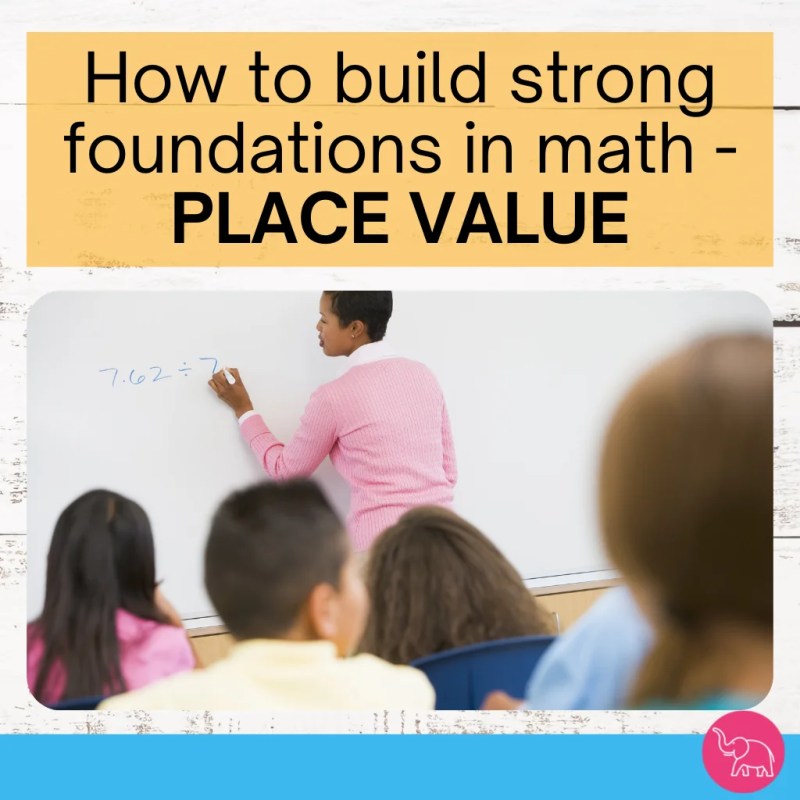Why is place value important?
Building place value skills is essential in math. I often find that those learners with a solid foundation in place value are more confident in math in general and, when working with struggling learners, it is usually the first area of math I assess and I often find there are gaps in understanding.
Place value is the building block for many math skills, for example:
- Comparing the size of numbers
- Ordering decimals
- Adding and subtracting
- multiplication and division
- Recognising number sequences
- Multiply and dividing by powers of ten.
- Converting monetary amounts
- Metric measures
The following three tips are based on my own experiences teaching for place value skills enrichment. I’d love to hear what works for your students too!
Tip 1: Digits and Mathematical Terms
A starting point is to ensure that I check all my students understand the language we use in place value. I try not to make assumptions with the age range I teach (students age 7-10). Students need to understand what is meant by digit and value.
For the term ‘digit’. I will define the word then ask students to sort sets of different numbers according to the number of digits, under headings such as 1 digit number, 2 digit number, a number with 3 digits.
Once a clear understanding of digit is there, I look at value. I’ll explain in terms of the value of a digit but also use the word value in different contexts, for example, just as the value of a car or house can differ, so can the value of a digit.
Once both terms are understood I can ask questions such as “What is the value of the number 8 in this five-digit number?”
Tip 2: Grouping into bundles of ten from concrete to abstract
I think (if I’m honest with myself!), when I was in a classroom setting, I didn’t use enough concrete or pictorial steps to help students learn and I missed opportunities to build connections and ensure those students who found math challenging could access this important math concept. As teachers, we constantly learn too!
In terms of filling knowledge gaps in place value skills, I return to the use of concrete objects (pencils, straws or base 10 blocks for example). I model counting out a group of ten and then wrap them together and say “I have 1 group of ten.” I write the number 1 and place the bundle next to it. I prefer to use objects that I can bundle first and then move to base 10 blocks.
I often write out the sentence “ I have 1 group of 10 using a different colour for the number 1 and use this color in the tens place in a place value chart to make a connection. Once I feel a student has understood that a 1 can represent a group of 10, I can move on to making groups of 10 with some objects remaining and model writing the tens and ones digits into a place value chart.
Next I use pictures of objects, for example apples, that I will ask students to find and draw a circle round any groups of 10. The student then tells me how many groups of ten there are and writes this in a place value chart and then tells me how many ‘ones’ are left which we then also write in the place value chart.
For larger digit numbers I use base 10 blocks and flip charts.
Tip 3: Partitioning
Again to check understanding at this point I will give a student a written number such as 17 in a place value chart and ask the student to make dot pictures or use base 10 blocks to represent the tens or ones. I find this a good place to model using arrow cards and introduce a partitioned number sentence 10 + 7 = 17.
In my place value teaching strategy, I make sure to use a multiple of ten number as an example. This creates the opportunity to discuss the placeholder zero in our number system.
Tip 4: Using Errors
For some reason my students love it when they get to be the teacher and spot my mistakes!
I will often ask them to mark my place value activity work, which of course holds some errors that reflect common misconceptions or will reinforce key points. For example I will write the number 10 with both digits in the ones place in a place value chart, write the digits in the wrong places so 23 as 32, or ask if this (402) is the number forty two.
Error Analysis is a fantastic tool at any age to build reasoning skills. If you have any questions or comments, I’d love to hear from you.
Have a look at some of the place value activities I’ve designed for 4th and 5th Grade math lessons. CLICK HERE to go to my store or on the image below.








